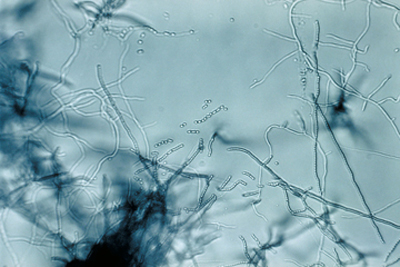Streptomyces are soil-dwelling bacteria that break down plant biomass in nature, though they may physically resemble fungi. One advantage of studying Streptomyces species is that their genomes are relatively small (approximately 10 million bases) and are usually localized to a single chromosome.
Streptomyces bacteria are among a select group of microorganisms that accumulate triacylglycerols, the chemical precursors of biodiesel. Sequencing bacterial species could help researchers identify novel enzymes such as laccases, peroxidases, xylanases, and cellullases that could be used by existing organisms to help produce biodiesels that are commercially competitive with petroleum-based fuels. Researchers could also use the information to learn more about the process of breaking down biomass with bacterial enzymes. Additionally, Streptomyces species are critical in environmental carbon cycling and nitrogen cycling. Streptomycetes also have a long history in biotechnology, where they have been used to produce antimicrobial drugs, anticancer agents, and immunosuppressants.

Photo: CDC/Dr. David Berd (PHIL #2983), 1972
Principal Investigators: Jason Sello, Brown University
Program: CSP 2010